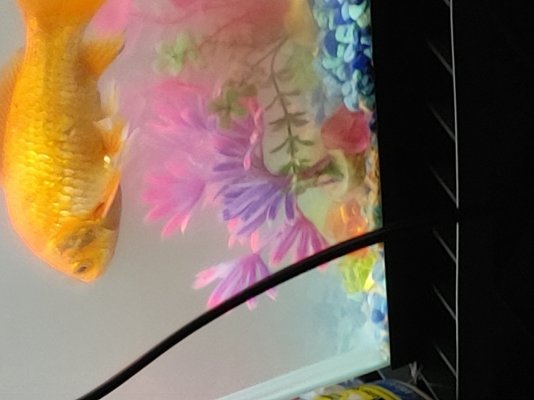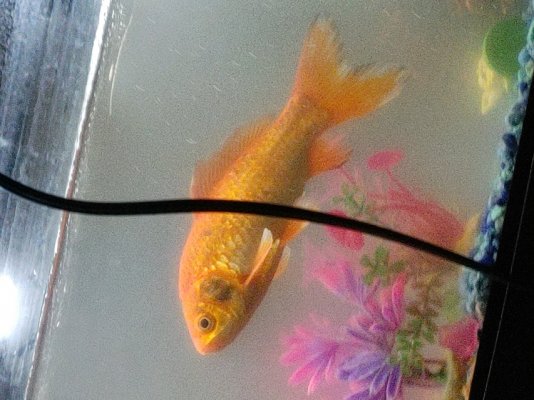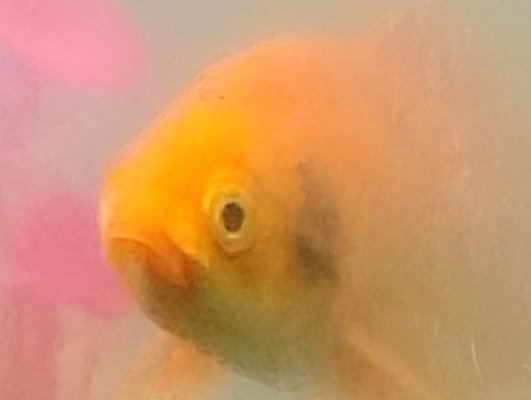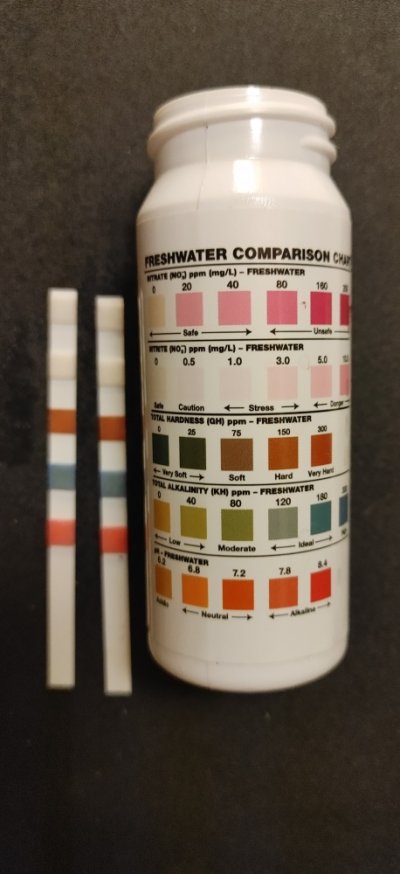Raquel9583
Aquarium Advice Newbie
- Joined
- Mar 30, 2022
- Messages
- 1
Hello, I'm new here and am also new to being a fish owner. My little girl who is 4 years old, won a goldfish at our local fair, which died the very next day.
After I went and spent like $70 on it a nice home and we hoped to have him live in and be happy in but poor little guy did not make it.
My boss has goldfish in his pond. Large ones, that he was nice enough to give her one of,
in replacement of her previous fish from the fair, that sadly died. ?
We have the new fish in an aquarium and we were trying to get our levels correct and in doing so, I believe between the water he came in, from his pond and our clean water, just mixed terribly.
Again, I'm far from a fish expert nor am I in anyway, firmiliar with how to test for all these things.
Tbh I'm fish-owner/fish tank retarded but I have grown fond of our little addition and have been really trying to understand it all.
I hope to have this one survive so that I don't have to explain to my 4 year old another time the sad reality about life and death.
I began seeing black spots on our poor fish. Large ones too.. So, we took him out of the tank and put him in small bowl while we cleaned out his tank, replaced the water completely, cleaned all the rocks, all the little decorations and everything.
I got a new cartridge to put inside his filter, waited 24 hours and began the process again.
I'm worried for him.
Maybe he is just stressed from the change but I'm also worried for his spots on his body.
I'm afraid to give him anything that could harm him more bc I've read that that the spots could be due to ammonia burns and I'm just afraid that our complete ignorance to what temperatures are correct for him, what to do when our water is hard, what to do to correct pH balance and alkalinity may not be on the ideal levels and it seems like everything I buy and try does not seem to be helping or clearing up his tank and now with these spots, just make me feel terrible, like I'm doing the opposite of helping him and I certainly don't want to be hurting him.
I just reintroduced him into the tank we cleaned but the water, even after 24 hours, is still very cloudy.
I bought some stuff called rapid cure and I haven't added it to the water yet bc I just want to be sure that, this is the correct solution to his issues before putting anything in whatsoever other than the normal tank solutions.
I have attached pictures of our fish and his spots. You can see the water prior to us changing the water completely was very cloudy.
I also attached pics of the test strips from the water, after the water change and if anyone could help suggest or point me in the right direction as to if everything should clear up and if the rapid cure should be added, I would greatly appreciate it.
I also have ick clear but haven't added that either.
The only thing we've put in the water is the water care kit and pH down.
After I went and spent like $70 on it a nice home and we hoped to have him live in and be happy in but poor little guy did not make it.
My boss has goldfish in his pond. Large ones, that he was nice enough to give her one of,
in replacement of her previous fish from the fair, that sadly died. ?
We have the new fish in an aquarium and we were trying to get our levels correct and in doing so, I believe between the water he came in, from his pond and our clean water, just mixed terribly.
Again, I'm far from a fish expert nor am I in anyway, firmiliar with how to test for all these things.
Tbh I'm fish-owner/fish tank retarded but I have grown fond of our little addition and have been really trying to understand it all.
I hope to have this one survive so that I don't have to explain to my 4 year old another time the sad reality about life and death.
I began seeing black spots on our poor fish. Large ones too.. So, we took him out of the tank and put him in small bowl while we cleaned out his tank, replaced the water completely, cleaned all the rocks, all the little decorations and everything.
I got a new cartridge to put inside his filter, waited 24 hours and began the process again.
I'm worried for him.
Maybe he is just stressed from the change but I'm also worried for his spots on his body.
I'm afraid to give him anything that could harm him more bc I've read that that the spots could be due to ammonia burns and I'm just afraid that our complete ignorance to what temperatures are correct for him, what to do when our water is hard, what to do to correct pH balance and alkalinity may not be on the ideal levels and it seems like everything I buy and try does not seem to be helping or clearing up his tank and now with these spots, just make me feel terrible, like I'm doing the opposite of helping him and I certainly don't want to be hurting him.
I just reintroduced him into the tank we cleaned but the water, even after 24 hours, is still very cloudy.
I bought some stuff called rapid cure and I haven't added it to the water yet bc I just want to be sure that, this is the correct solution to his issues before putting anything in whatsoever other than the normal tank solutions.
I have attached pictures of our fish and his spots. You can see the water prior to us changing the water completely was very cloudy.
I also attached pics of the test strips from the water, after the water change and if anyone could help suggest or point me in the right direction as to if everything should clear up and if the rapid cure should be added, I would greatly appreciate it.
I also have ick clear but haven't added that either.
The only thing we've put in the water is the water care kit and pH down.




